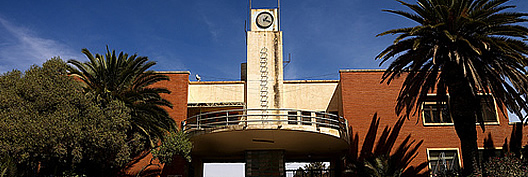Eritrea

Once part of greater Ethiopia, but now estranged, the bad blood between these two neighbours exists as an unresolved feud. And like a plucky little street-fighter, Eritrea has since refused to be cowed, beaten or occupied despite some of the most bitter and costly wars fought in a region of hardy and seasoned warriors.
Eritrea was the first Italian foothold in Africa from where, during the frenetic Scramble for Africa of the late 19th century, Italy unsuccessfully tried to expand her African colonial holdings in keeping with the activities of her more economically robust neighbours among the Old World powers. In 1941 Eritrea came under British administration, and after World War II was federated to Ethiopia, which immediately triggered a separatist civil war that endured until the political realignment of the post Soviet era. Since then border disputes have erupted into open warfare, and even during periods of peace Eritrea still maintains a scrappy and pugilistic attitude to its neighbours, including Sudan, and at times even including the African Union.
Geographically Eritrea is defined by the Great Rift Valley. This iconic feature dissects Africa up its length from Levantine nations of the eastern Mediterranean to the southern tip of Lake Malawi. In Eritrea it forms a range of mountains running broadly north to south, with fertile lands to the west, and a low lying and arid coastal plain to the east. The highest point in Eritrea is Emba Soira, situated some 60 miles south of the capital Asmara in the central highlands, which enjoys an altitude of 3018 meters above sea level.
Travel To & Within Eritrea
Flights to Eritrea Accommodation in Eritrea
Why Travel to Eritrea
Most travel advisories related to Eritrea suggest that the countryÂs main attractions lie in the natural regions of the country outside the towns and cities. Without doubt these are uniquely diverse, and undeniably appealing, but an interesting residue of Italian influence, particularly in the capital city of Asmara, is the result of experimentation with period architecture that the Italians were responsible for during their period of occupation.
AsmaraÂs city centre was built largely in the 1930s, and the opportunity was taken by progressive modernist architects to experiment with styles of Architettura Razionale, novecento, futurismo, neo-classicism, neo-baroque and monumentalism. As outlandish as it might seem, within the reasonably well preserved precincts of Asmara, and interspersed with the more orthodox strains of Nilotic and Arabic influence, all of this can be seen. Currently efforts are underway to declare Asmara a World Heritage Site.
So while the unspoiled outer reaches of Eritrea  the mountains, the Red Sea Coast, the deserts and northern breach of the Sahel  do indeed make for a unique cultural odyssey, the more localised peculiarities of the main cities of Eritrea are not to be ignored.
When to Visit Eritrea
There are no seasonal rushes in Eritrea that are likely to blight your journey, so all that need to be considered when planning a trip to the region is the local climate.
On the whole the desert regions to the west and south can register astronomical temperatures during the hellfire months of summer, and although seasonal variations in temperature are not great, between June and August rainfall within and to the west of the highlands is intense and sustained, and needless to say temperatures along the coastal plain are at their most infernal. The best time to make the journey is between October and March when winter conditions and limited rainfall are altogether more amenable.
Travel Warning
Sadly the general advice available is to avoid all non-essential travel to Eritrea, and although this is not the case necessarily with the capital city in terms of its unique attractions, this alone would hardly justify a journey to the region. Intense restrictions are in place for all travel outside Asmara, including for embassy and diplomatic staff, and anywhere within the vicinity of an international frontier is a no-go area. Landmines in these areas are also a very real threat.
The border with Ethiopia is permanently sealed, and the border with Sudan is intermittently closed. A boundary dispute with Djibouti has rendered the southern border region insecure.
Street crime is rare in Eritrea, although an upward trend has been recorded.
Overt homosexual activity is unlikely to be viewed positively anywhere in Eritrea, and modest dress for both women and men is advisable.